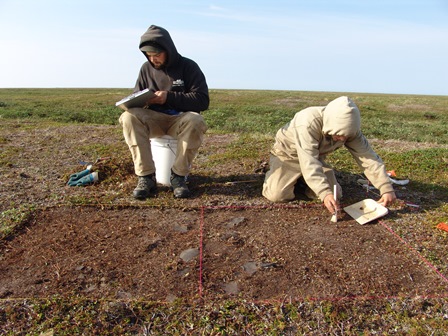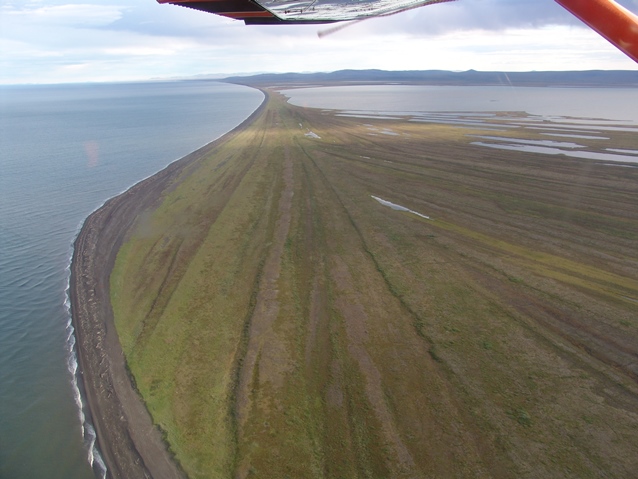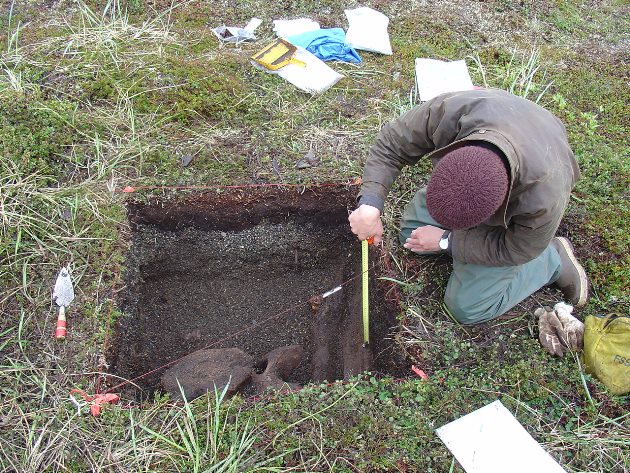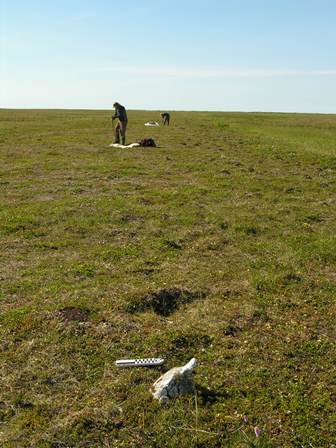Coastal Settlement Patterns

NPS
Adaptations on the Chukchi Sea

NPS
Studies investigating early coastal settlements in high latitudes can provide information on how past populations subsisted in areas of low biodiversity and increased seasonality of available resources. The beach ridges of Cape Krusenstern National Monument on the eastern edge of the Chukchi Sea are a well-known archeological site complex with evidence of human occupation for the past 4,000 years. New research demonstrates that the prehistoric population of this coastal area was much higher than previously thought. Additionally, the data show that human occupation over the last 2,000 years was nearly continuous, despite significant environmental variability during the late Holocene.
Methods and Results

NPS
Research methods included an intensive systematic pedestrian survey at Cape Krusenstern over four field seasons (2006, 2008-2010). Crews recorded all archeological features encountered with high-precision GPS (Global Positioning System) methods. The number of features was compared to legacy spatial data of archeological features captured in the 1960’s. The greater number of newly mapped features indicates a more intensively utilized landscape than was previously realized. Bone, charcoal, and wood collected through subsurface testing in the features were radiocarbon dated, allowing for a diachronic evaluation. The increase in semi-subterranean house features after 2,000 years ago and the increase in cache (storage) pits after 1,000 yearsago points to intensified human occupation and increased sedentism during these times. Using radiocarbon dates and number of features as proxies for population, the data show nearly continuous occupation of the site complex for the past 2,000 years.
In general, these findings support prior interpretations of human use and settlement of the Cape Krusenstern beach ridges. New details of the timing and intensity of occupation provide additional data to evaluate hypotheses of socioeconomic interactions in prehistoric northwestern Alaska, particularly in regard to the Neoeskimo migration across the North American Arctic. Findings regarding the continuity of occupation raise new questions of the adaptiveness and resiliency of people and their response to significant late Holocene environmental variability. Answers to these questions may be prescient for Alaskan coastal communities currently dealing with shoreline erosion and other effects of climate change.
References and More Information

NPS
S.L. Anderson and Freeburg, A.K. (2014) High Latitude Coastal Settlement Patterns: Cape Krusenstern, Alaska. The Journal of Island and Coastal Archaeology, 9(3), 295-318.
For more information: www.nps.gov/cakr/historyculture/places.htm
Click here to print a copy of this article.
Last updated: November 22, 2021
